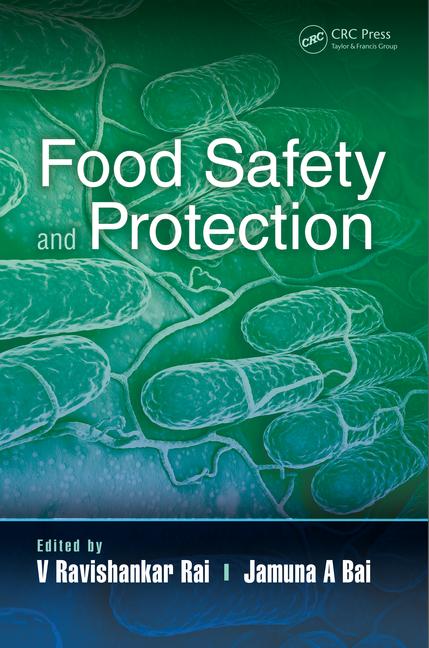Intellectual Property Protection in the Food Industry

Through its widespread involvement in and impact on a number of industries, including farming, agriculture, production, packaging, distribution, retail, and catering industries, the food industry has become the world’s largest industry.[1,2] Not surprisingly, it has also become one of the most competitive industries, with thousands of businesses trying to outmaneuver one another to gain an edge over their rivals. To do so, food companies are expending considerable resources in creating and promoting distinctive brands and increasingly looking toward intellectual property (IP) protection as a tool to establish or maintain their dominance in the field.
And yet, other than an extensive use of trademarks and some limited design protection applied to packaging, IP protection has traditionally been underutilized in the food space. As stated by Eben Freeman, the creator of the smoked-Coca-Cola cocktail, “In no other creative business can you so easily identify money attached to your creative property…Yet, we have less protection than anyone else.”
As we will outline below, IP offers a wide array of tools that can set companies apart and edge out the competition. Scientific and market studies show that packaging innovation has a direct impact on buying behavior, with consumers purchasing more of certain products exclusively based on the color, shape, or markings on the packaging. Meanwhile, start-ups, innovating entrepreneurs, and chefs around the world are more often using science and new technology to reinvent this industry. In an increasingly competitive business, where the lines between inspiration and copies are often blurred, it has become essential to find a differentiator: IP could be this magic bullet. In this context, however, food safety should remain a focus of concern for entrepreneurs and lawmakers so that the desire for novelty and uniqueness does not overcome the essential concern for safety.
In this article, we will first give an overview of all the IP protection options in the food business. We will then outline the specific challenges to IP protection in this area before turning to the opportunity and future prospects offered by IP in the food industry.
Large Array of Potential Protection
IP protection offers multiple tools that allow businesses to safeguard their creations in the food industry. While word marks are, overwhelmingly, the tool most used by businesses in this area, there are many other underutilized instruments that can offer a competitive edge in the field.
Trademark
A trademark is a nonfunctional, distinctive sign used by a business to differentiate its goods from those of its competitors. Traditionally, a trademark consists of a word (e.g., Cheerios), stylized word or letter (e.g., McDonald’s emblematic M logo), device (e.g., Nestlé’s birds’ nest), or tagline (e.g., “Life tastes better with KFC”).
 Trademarks can, however, also be used to protect the shape, or even color, of a product or its packaging. Most famously, Toblerone has obtained a long-standing trademark for its distinctive triangular chocolate bar.
Trademarks can, however, also be used to protect the shape, or even color, of a product or its packaging. Most famously, Toblerone has obtained a long-standing trademark for its distinctive triangular chocolate bar.
 Similarly, in Europe, Milka received trademark protection for its purple packaging.
Similarly, in Europe, Milka received trademark protection for its purple packaging.
Companies around the world are increasingly trying to apply for untraditional marks such as sounds, scents, flavors, and motions. While there are inherent challenges in obtaining these types of trademarks in the food industry, when available, they turn out to create an incredibly valuable advantage for the brand.
Trade Dress
 Trade dress is a subset of trademark law that protects the design, shape, color, packaging, or appearance of a product, so long as these characteristics work as a source identifier for the consumer. Simply put, trade dress protects the overall look and feel of a product, as long as its owner can show that the consumer will immediately associate this look and feel with their brand. Based on this, Pepperidge Farm was able to obtain trade dress protection on its famous Goldfish crackers, Coca-Cola on its famous Coca-Cola bottle, and Hard Rock Cafe on their buildings.
Trade dress is a subset of trademark law that protects the design, shape, color, packaging, or appearance of a product, so long as these characteristics work as a source identifier for the consumer. Simply put, trade dress protects the overall look and feel of a product, as long as its owner can show that the consumer will immediately associate this look and feel with their brand. Based on this, Pepperidge Farm was able to obtain trade dress protection on its famous Goldfish crackers, Coca-Cola on its famous Coca-Cola bottle, and Hard Rock Cafe on their buildings.
 These famous examples illustrate that trade dress can be an extremely powerful protection tool. However, such protection may not be available for every brand, as trade dress protection requires a fairly high standard of originality, substantial marketing investment, and a certain degree of notoriety.[3]
These famous examples illustrate that trade dress can be an extremely powerful protection tool. However, such protection may not be available for every brand, as trade dress protection requires a fairly high standard of originality, substantial marketing investment, and a certain degree of notoriety.[3]
Patents
Patents protect any new, useful, and nonobvious process, machine, manufacture, or composition. While patents could seem an ideal tool to protect any innovative recipe, manufacturing process, or packaging, the threshold for the novelty and nonobviousness criteria is so high that patents remain relatively underused in the food business. This is all the more true in an industry in which entrepreneurs are also limited by essential food safety considerations that may curb their freedom in practice.
According to the U.S. Supreme Court, to claim protection in food products, “an applicant must establish a coaction or cooperative relationship between the selected ingredients which produces a new, unexpected, and useful function.” As a result, “new recipes or formulas for cooking food, which involve the addition or elimination of common ingredients, or for treating them in ways which differ from the former practice, do not amount to invention merely because no one else ever did [it].”[4]
This strict position has discouraged many in the industry from applying for patent protection.
 However, patent protection is regularly granted in the food industry in areas outside of recipes, such as for machines, packaging, and innovative processes. More exceptionally, this tool has also been used to protect new foods, such as the patent obtained by chef Ferran Adria on his Olive Oil Caviar.
However, patent protection is regularly granted in the food industry in areas outside of recipes, such as for machines, packaging, and innovative processes. More exceptionally, this tool has also been used to protect new foods, such as the patent obtained by chef Ferran Adria on his Olive Oil Caviar.
Designs
In the U.S., design patents, a subset of patent law, provide protection to original, nonfunctional, and useful products or packaging. A design patent lasts up to 20 years and remains a good enforcement tool against infringers.
Similar protections exist in other countries, such as the protection offered by registered community design (RCD) or unregistered community design (UCD) in Europe. To be valid, RCDs and UCDs must be novel and have individual character. RCDs and UCDs are given 5 years of protection and are renewable up to 25 years.
While design patents and RCDs offer a good protection option for product or packaging shape, the duration of their protection is limited in time and their validity is often challenged. When this protection is available, businesses will therefore often opt, instead, for a 3-D trademark or trade dress.
Copyright
Copyright law protects original works of authorship fixed in a tangible medium of expression. To obtain protection, the author must show a certain threshold of originality and that the artistic aspects of the creative work are separate from its utilitarian function.
Companies have attempted to use copyright law to protect food products with varying success based on a particularly high creativity threshold in this area, the utilitarian function of many innovations in the food business, and the necessity that the work should be fixed in a tangible medium.[5]
While copyright protection faces its own challenges in the food industry, it can still provide valuable protection options for innovative businesses.
Indication of Origin (Certification Marks)
With increasing consumer interest around traceability and food safety issues, information about the origin of food, conditions, and manufacturing processes of food products has acquired growing value. As such, geographical indications, labels, collective marks, certification marks, and indications of origin are increasingly used to convey information to consumers. These indications are used to provide information on not only the origin of a product but also on the quality and safety associated with a certain geographical location, territory, source, or manufacturing process. The European Union recently also created certification marks as a response to this increased consumer awareness. Given the influence these indications have on buying behavior and the role they play in increasing food safety, there is no doubt that use of these indications will continue to grow.
Trade Secrets
Finally, trade secrets protect information that derives economic value from not being generally known to another person. Trade secrets do not require any registration, but they do require a number of precautions to keep them secret.
 Many companies are already using trade secrets as a competitive strategy to protect their foods by keeping “secret recipes”; for instance, Coca-Cola’s soda formula, Kentucky Fried Chicken’s “11 herbs and spices” recipe, and the Krispy Kreme doughnut recipe are all trade secrets.
Many companies are already using trade secrets as a competitive strategy to protect their foods by keeping “secret recipes”; for instance, Coca-Cola’s soda formula, Kentucky Fried Chicken’s “11 herbs and spices” recipe, and the Krispy Kreme doughnut recipe are all trade secrets.
 Trade secrets can be extremely valuable, and these recipes will continue to be protected so long as they are kept secret. However, trade secrets can be difficult, time-consuming, and costly to enforce, and their protection remains fragile, since disclosure of the secret puts an end to the coveted monopoly. They are also less effective in increasing food safety and transparency in a context where people are more concerned about these issues.
Trade secrets can be extremely valuable, and these recipes will continue to be protected so long as they are kept secret. However, trade secrets can be difficult, time-consuming, and costly to enforce, and their protection remains fragile, since disclosure of the secret puts an end to the coveted monopoly. They are also less effective in increasing food safety and transparency in a context where people are more concerned about these issues.
While IP offers a wide array of potential protections, each of these tools faces specific challenges in the food industry.
Challenges to IP Protection
A large array of potential protection is available for food, food packaging, manufacturing process, or other innovations in the food industry. However, many of these protection tools face challenges that can be especially hard to overcome in the food industry. These limits include the technical function exclusion, the distinctiveness requirement, and some safety concerns specific to this industry.
Technical Function Exclusion
Copyright, trademark, design, and patent protection generally don’t apply to any shapes, features, or characteristics that are purely functional or necessary to obtain a technical result.[6]
This requirement poses a significant challenge in the food industry because, more often than not, the taste, appearance, color, and/or shape of food and/or its packaging are dictated by a functional result: The food has to be tasty, easy to grasp with a fork, spoon, or fingers, convenient to eat in one bite, and safe to consume; the packaging has to be protective against contamination events and easy to stack or carry, or may be dictated by space-saving or conservation requirements. Based on this observation, courts around the globe regularly reject copyright, patent, design, or trademark protection for a variety of food products.
In Organon, for instance, the U.S. Patent and Trademark Office Trademark Trial and Appeal Board rejected a trademark protection claimed on the “orange flavor” for a pill, based on the fact that this “orange flavor” was functional inasmuch as it provided consumers with a pleasant taste.[7]
Likewise, in Kim Seng, a California court held that a bowl of noodles was not protectable by copyright or trade dress. Specifically, the court rejected copyright protection based on the fact that the bowl of noodles: (i) was not an original work because a combination of unprotectable elements (bowl and food) does not constitute an original work, (ii) the bowl of noodles was perishable and therefore not fixed in a tangible medium, (iii) the food items could not be separated from their utilitarian function, which is to be eaten, (iv) recipes are not copyrightable because they are functional, and (v) the taste of food cannot be protected.[8]
 Similarly, in the EU, trademarks claimed on the shape of food or food products are rejected when they are deemed: (i) to result from the nature of the goods, (ii) necessary for a technical result, or (iii) to give substantial value to the goods. In this context, Nestlé lost its battle to register its famous four-fingered wafer chocolate bar (KitKat), despite being able to show that 90 percent of UK consumers were able to associate the four-fingered wafer shape with Nestlé.[9] Specifically, the court found that “although consumers know a KitKat when they see one,” Nestlé had not been able to show a level of acquired distinctiveness beyond mere recognition, especially considering that consumers could not see the shape of the product when buying it, just a square package, which is not distinctive.
Similarly, in the EU, trademarks claimed on the shape of food or food products are rejected when they are deemed: (i) to result from the nature of the goods, (ii) necessary for a technical result, or (iii) to give substantial value to the goods. In this context, Nestlé lost its battle to register its famous four-fingered wafer chocolate bar (KitKat), despite being able to show that 90 percent of UK consumers were able to associate the four-fingered wafer shape with Nestlé.[9] Specifically, the court found that “although consumers know a KitKat when they see one,” Nestlé had not been able to show a level of acquired distinctiveness beyond mere recognition, especially considering that consumers could not see the shape of the product when buying it, just a square package, which is not distinctive.
Similarly, in a recent decision, the Court of Justice of the EU found that Coca-Cola’s newest variation of its bottle (the “red bottle”) was not protectable under trademark law, as it did not enable consumers to distinguish it from other bottles in the market, despite large marketing investment and high consumer recognition.[10–12]
In addition to this functionality roadblock, another common challenge to IP protection in the food industry is that many names or features whose protection is sought are very suggestive, and often outright descriptive, thereby not protectable.
Distinctiveness Requirement
To receive trademark or trade dress protection, a mark or trade dress must be distinctive, meaning consumers must identify the mark or trade dress as a source identifier. Distinctiveness can be inherent or it can be acquired by use. Generic marks, however, can never acquire distinctiveness, as it would deprive competitors of the right to use a term necessary to designate a specific product (e.g., Apple is a valid mark for a computer, but it could not be used as a mark for applesauce).
Because the food industry is so competitive and manufacturers and retailers have to find names that are evocative enough to be remembered by consumers faced with a lot of choices, food businesses tend to adopt trademarks that are very suggestive, often bordering on descriptive. As a result, a number of marks get rejected based on their lack of distinctiveness.
 For the same reasons, registration for color marks remains very difficult to obtain as courts tend to challenge the idea that a unique color could play a source-identifying role. As such, Cadbury’s registration of a dark-purple color for its chocolate packaging was recently challenged by the UK Court of Appeals.
For the same reasons, registration for color marks remains very difficult to obtain as courts tend to challenge the idea that a unique color could play a source-identifying role. As such, Cadbury’s registration of a dark-purple color for its chocolate packaging was recently challenged by the UK Court of Appeals.
Health and Safety Concerns and Practical Considerations
Contrary to other industries, in the food business, when it comes to innovation, it can hardly be said that “the sky is the limit.” For obvious health and food safety reasons, but also for practical considerations, start-ups and innovators cannot just decide to offer their food products or food packaging in any shapes, materials, sizes, or even colors.
For instance, food products have to be produced in a size that is practical to consume, cook, and hold. The ingredients used in a recipe have to be not only edible but also measured, transformed, and presented according to specific regulations. The use of colorants, stabilizers, and other processing agents is highly regulated.
When it comes to packaging, because of its contact with food, the rules are almost as stringent: Entrepreneurs are limited not only in the material and shape they can use but also, very often, by practical considerations such as the way the food stacks and displays during shipping, transportation, and sale, as well as the safety considerations of the packaging components. And yet, innovation is and will increasingly become the key to success in tomorrow’s food industry.
Opportunity and Future Prospects for IP Protection
Despite the specific challenges to IP protection existing in the food industry, IP, and more specifically, unusual trademarks and patents with respect to food safety rules, are increasingly used to protect the shape, color, aspect, or distinctive feature of food or packaging.
Growing Role of IP as a Competitive Tool
Creativity, research, and scientific innovation such as 3-D printing have opened a whole new world in the food industry by diversifying food shapes, textures, packaging, and materials. While these tools have to be used with an eye on health and safety considerations, they offer endless possibilities to explore protection through trademark, trade dress, and patent law.
 New materials and manufacturing processes also offer endless options for new IP protection in the food market. As such, in the past 10 years, China has seen a 500 percent increase in patent filings in the food industry. The U.S. and Europe are following this trend, with respective 90 percent and 30 percent increases of patent applications in this area. In the U.S., Beyond Meat was able to obtain a patent on a vegetable burger, and companies such as Nestlé, P&G, Unilever, PepsiCo, Coca-Cola, and Kellogg are increasingly filing food-related patents, including on food products, innovative packaging, chemical or biological composition, or new plant varieties.
New materials and manufacturing processes also offer endless options for new IP protection in the food market. As such, in the past 10 years, China has seen a 500 percent increase in patent filings in the food industry. The U.S. and Europe are following this trend, with respective 90 percent and 30 percent increases of patent applications in this area. In the U.S., Beyond Meat was able to obtain a patent on a vegetable burger, and companies such as Nestlé, P&G, Unilever, PepsiCo, Coca-Cola, and Kellogg are increasingly filing food-related patents, including on food products, innovative packaging, chemical or biological composition, or new plant varieties.
 Finally, the consumer’s and market’s growing concern over environmental impact and health and food safety considerations also provides new opportunities for research and development, thereby offering new opportunities for patent protection.
Finally, the consumer’s and market’s growing concern over environmental impact and health and food safety considerations also provides new opportunities for research and development, thereby offering new opportunities for patent protection.
In this context, it appears not only possible but also highly desirable for a food company to increase its IP protection to remain competitive.
Advice to Obtain Protection on Shape, Color, or Unusual Features
While courts in Europe and the U.S. may be reluctant to accept trademarks, patents, or designs on functional or not extremely distinctive shapes, flavors, colors, or features, the protection obtained on Toblerone’s chocolate shape, Milka’s purple color, and Coca-Cola’s bottle shows that such protections are possible for original shapes or colors.
To increase the chances of obtaining such protection, it is recommended to focus on a limited number of differentiators (color, shape, logo, or any other distinctive feature) and to use these differentiators in a very consistent way across all products, packaging, or marketing so as to solidify the association of that feature with the brand in the mind of consumers.
Also, businesses should keep any evidence, including consumer feedback, letters, reviews, surveys, press articles, or any other support, showing that their distinctive sign or feature has become associated with their company and departs from the norms and customs of that field and industry.
Finally, it is essential that businesses protect their distinctive features aggressively to keep them from becoming diluted or generic.
While there are specific challenges in obtaining IP protection in the food industry, IP is playing an ever-expanding role for businesses looking to acquire an edge over their competitors. With the prominence of social media, influencers, and marketing in buying behavior, food businesses are racing to differentiate themselves by applying innovations to the shape, material, color, taste, texture, or manufacturing processes of their food or packaging. Those who understand how to protect these innovations through the appropriate IP tools, while also preserving health and noncompetitive food safety rules essential to this business, will quite likely come out the winners of this race.
References
1. www.worldbank.org/en/topic/agriculture.
2. www.forbes.com/2007/11/11/growth-agriculture-business-forbeslife-food07-cx_sm_1113bigfood.html#40edc728373e.
3. Cupcakes, Inc. v. LuAnn’s Cupcake, Inc., No. 2:2010cv00457 (D. Utah 2010).
4. In re Levin, 84 U.S.P.Q. 232 (1949).
5. Kim Seng Co. v. J&A Importers Inc., 810 F.Supp.2d 1046 (Cal. 2011) (rejecting the protection of a bowl of noodles based on these criteria).
6. Art. 7 EU Trademark Regulation and Article 8 of the CDR.
7. trademarks.lexroll.com/2016/10/28/in-re-n-v-organon-76467774-ttab-12-7-2005/.
8. Kim Seng Co., 810 F.Supp.2d 1046.
9. Société de Produits Nestlé SA v. Cadbury UK Ltd., CJEU C-215/14 (2015).
10. Coca-Cola Company v. Office for Harmonisation in the Internal Market, T-411/14 (2016).
11. www.ft.com/content/16351d98-46d9-11e7-8d27-59b4dd6296b8.
12. lexdellmeier.com/en/blog/egc-shape-new-coca-cola-bottle-cannot-be-protected-trademark.
Looking for a reprint of this article?
From high-res PDFs to custom plaques, order your copy today!








